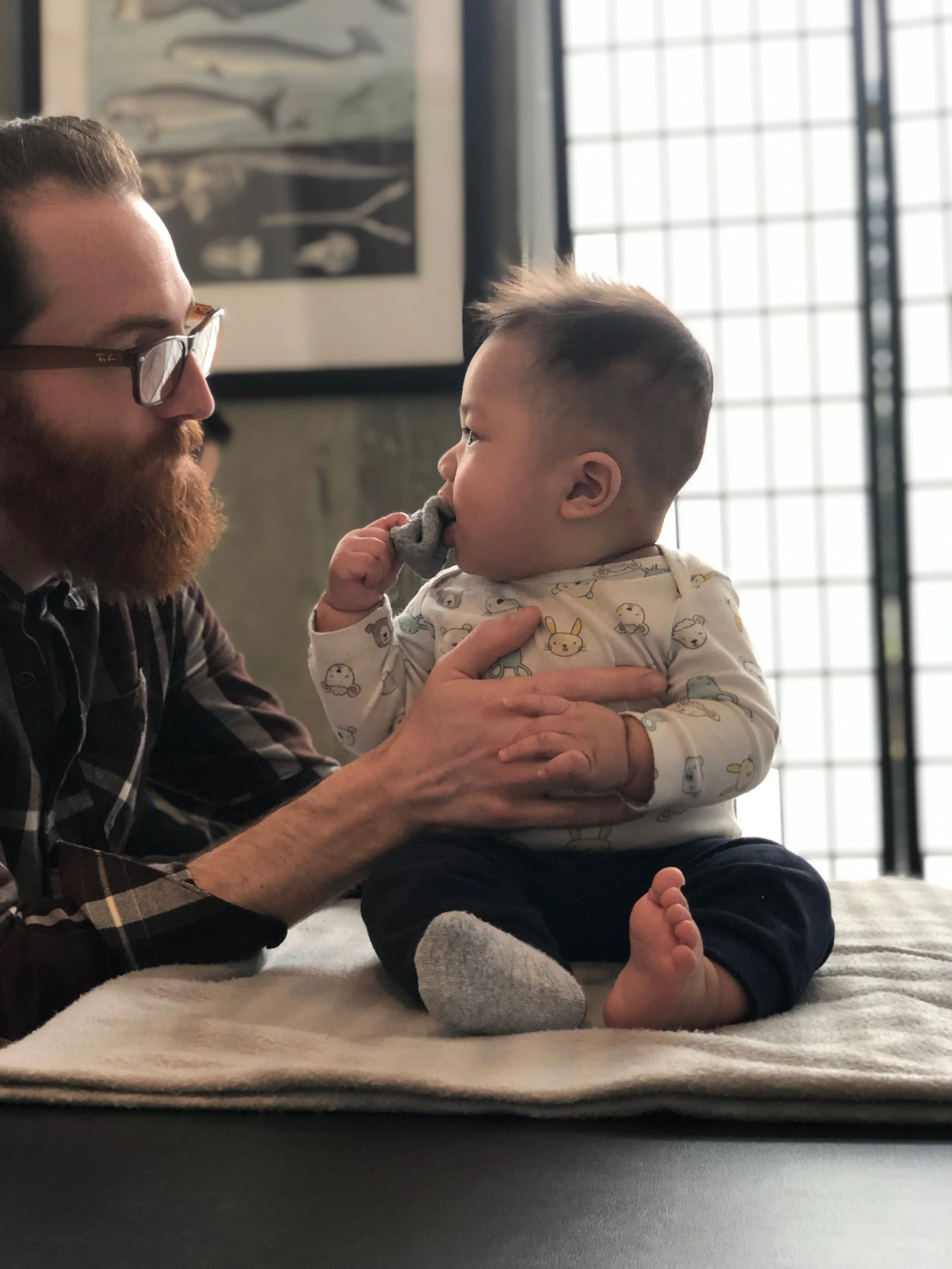Kids need chiropractic.
Now more than ever, supporting the developing nervous systems and bodies of kids is essential. From birth trauma to chemical exposure, sports injuries and bike accidents to information overload, sibling and school stress to hormonal changes, kids these days are navigating a different and oftentimes more stressful set of environments than previous generations. Chiropractic, focused on clearing the interference in the nervous system, brings ease to the body and balance to other organs and systems. It’s not always about pain. Whether it’s latch, colic, gut, immune, sensory, attention, or social, the first thing that must be online when addressing these issues is balance in the autonomic nervous system. This is the primary focus of chiropractic. This is why we measure nervous system function with our Insight technology. This is how we can have and hold a conversation about how function informs how we feel.
What about other modalities?
Acupuncture, speech, PT, OT, primitive reflex integration, and even medical intervention can all provide support to kids. In my experience, the timing and the order in which modalities are introduced is what makes the difference between major benefit and okay results. The first system in the body to come online is the nervous system. It weaves through all tissues and organs. Normal function in the nervous system is the foundation for the health of the body. It literally sets the tone for how the other systems will respond to environmental demands and be able to adapt to stress. By addressing this first with chiropractic, the when and where of bringing in other modalities gets much more clear, and the body becomes more receptive to those other kinds of inputs.
Why a Care Plan?
Nerve interference alters the amount and timing of signal between the brain and body. In chiropractic, this interference is known as subluxation. Chiropractors address this interference with adjustments (plural). Adjustments over time, tailored to the case with technique, frequency, and projected duration is what we call a Care Plan. It is neurologically and clinically more helpful to adjust fewer areas over time than adjusting as many areas as possible in one visit.
The benefits of care are cumulative and consistency is key. Everything that is a process takes time. How much depends on many factors, which is why deep dive on health history and use modern technology to measure nervous system efficiency, adaptability, and resilience, along with our clinical assessments. Every kid is different, but the patterns of interference are recognizable if you know how to look.
Care Plans orient around reassessments. Like telemetry, we want to update our current coordinates, compare with where we started, and make sure we are heading in the direction of reorganization of vital energy and restoration of health. This is what neurologically-focused pediatric chiropractic looks like in our office, and a case for why kids need chiropractic, now more than ever.
If you or someone you know could benefit from learning more about how chiropractic could help their kid, please have them reach out to the office. Thank you!
Rocking to Rolling
Rolling to rocking, kicking to crawling unfolds in the order it does to keep time with the stages of development. As the perceptual field of the infant expands, the innate desire to explore the world drives the movements to do so. The way these movements express - their symmetry, their sequence, their coordination - reflects the way the central nervous system is able to adapt to the environment. Supporting this coordination between the brain and body is the primary aim of chiropractic care.
The cross-crawl pattern of hands and knees alternating in sync is the foundation for walking. This pattern weaves the circuitry between both sides of the brain, which is essential for walking, but also the capacity to dialogue. That is, to converse with, investigate, be curious about, and begin to shape the world we inhabit.
For more information about how and why I study, train, and recommend chiropractic for kids, click here.
A Balanced Tension
The first instrument I learned to play was the cello. I recall that the first lesson was how to tighten the bow. The “horsehair” threads that are drawn across the metal strings need to be not too tight and not too loose. It wasn’t until later that we learned to tune the strings. The seasoned ear and hand of the music teacher helped keep the violins, violas, cellos, and basses in tune. I can attest that the sawing serenades of 5th grade novices inflicted both physical and sonic trauma to those instruments. However, the generous encouragement of parents and teachers taught compassion, patience, and to trust the reward of diligent practice.
All stringed instruments require a balanced tension within and across the body to resonate their sound. It is this state of balanced tension that characterizes how the central nervous system feels when it is adaptive and resilient. In chiropractic, we refer to this as tone.
We often consider tension a bad thing, relating it to stress. Out of proportion and balance, it is. In proportion, it expresses balance, potential, and creative energy.


